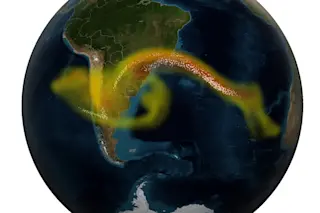Not far from Hazard, Kentucky, in the shadow of Lost Mountain, a woman named Ruth Mullins saw smoke rising off the slope. “I knew it wasn’t no woods on fire, because of the smell”—the rotten-egg stench of sulfur—she said. Her suspicions were soon confirmed: Lost Mountain’s coal mine, abandoned for 40 years, was burning.
Kentucky names coal fires for the people who first report them, so the fire, which has continued to smolder and occasionally flame since it was identified in 2007, is known officially as the Ruth Mullins fire. “We’ve never met the woman and we don’t know where she lives, but her name now appears in scientific publications that are read all over the world,” says Jennifer O’Keefe, a geologist at Kentucky’s Morehead State University. “She’s got her little bit of immortality.”
O’Keefe is part of a team that has been visiting the Ruth Mullins fire over the ...













